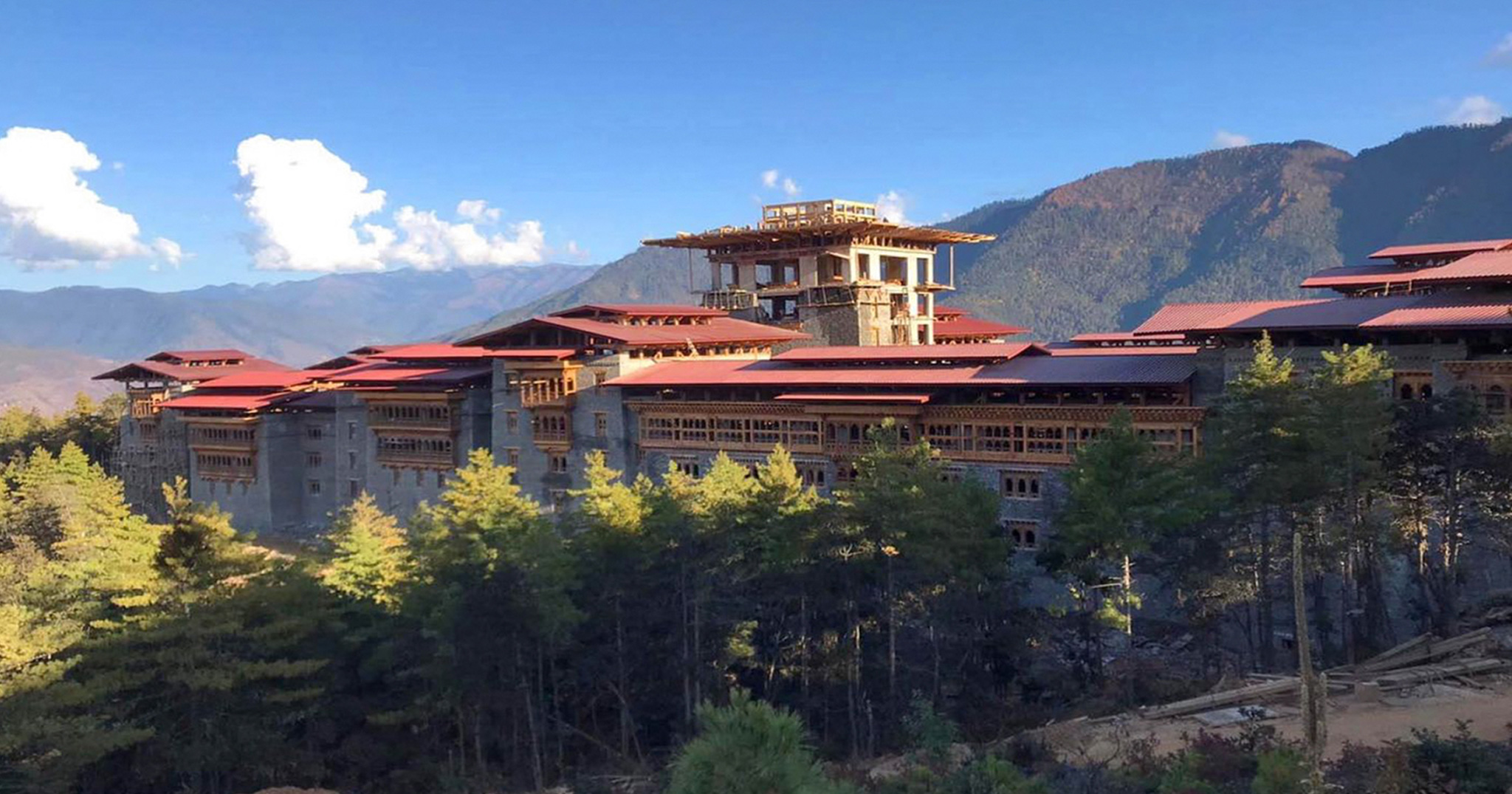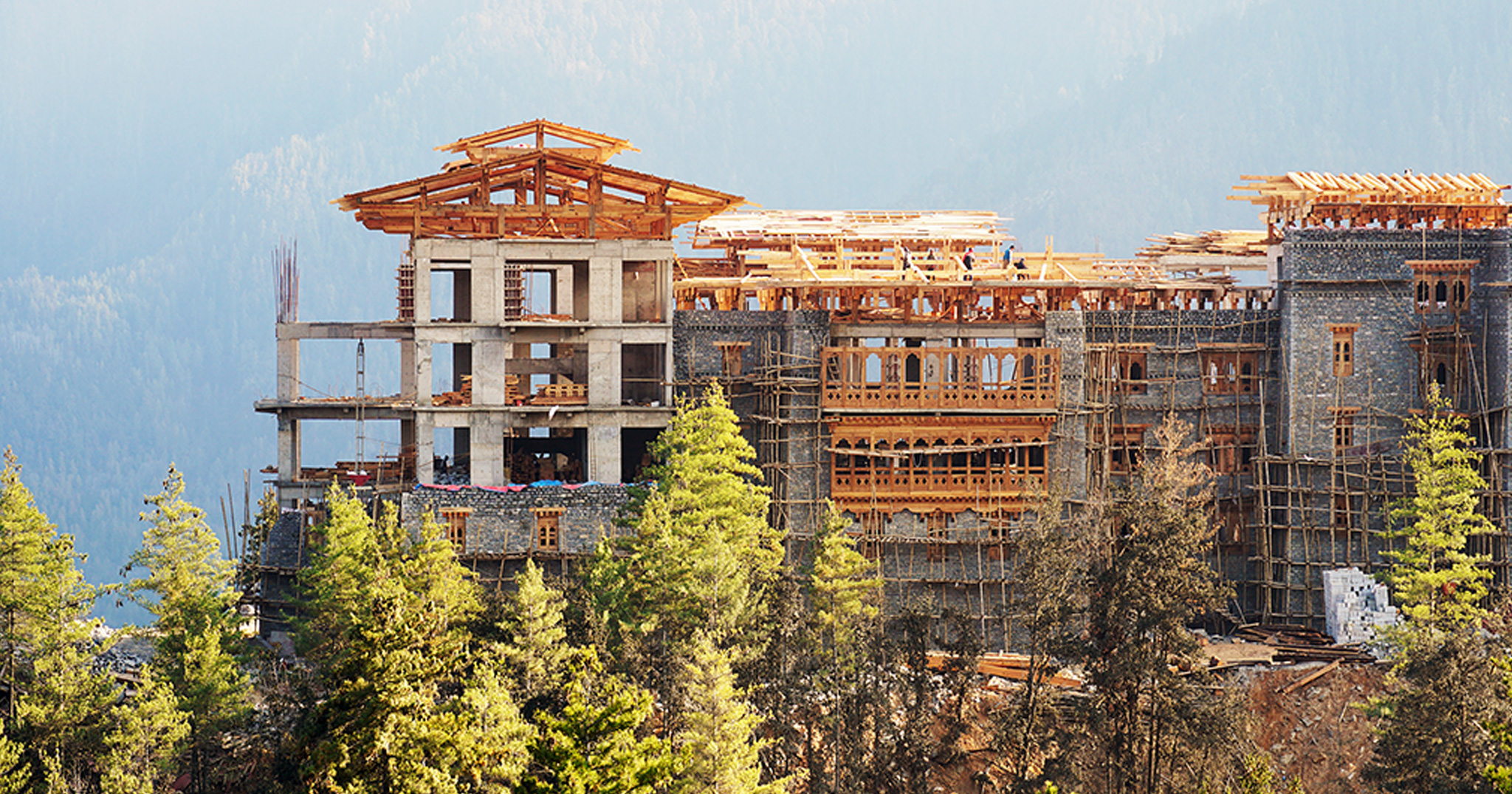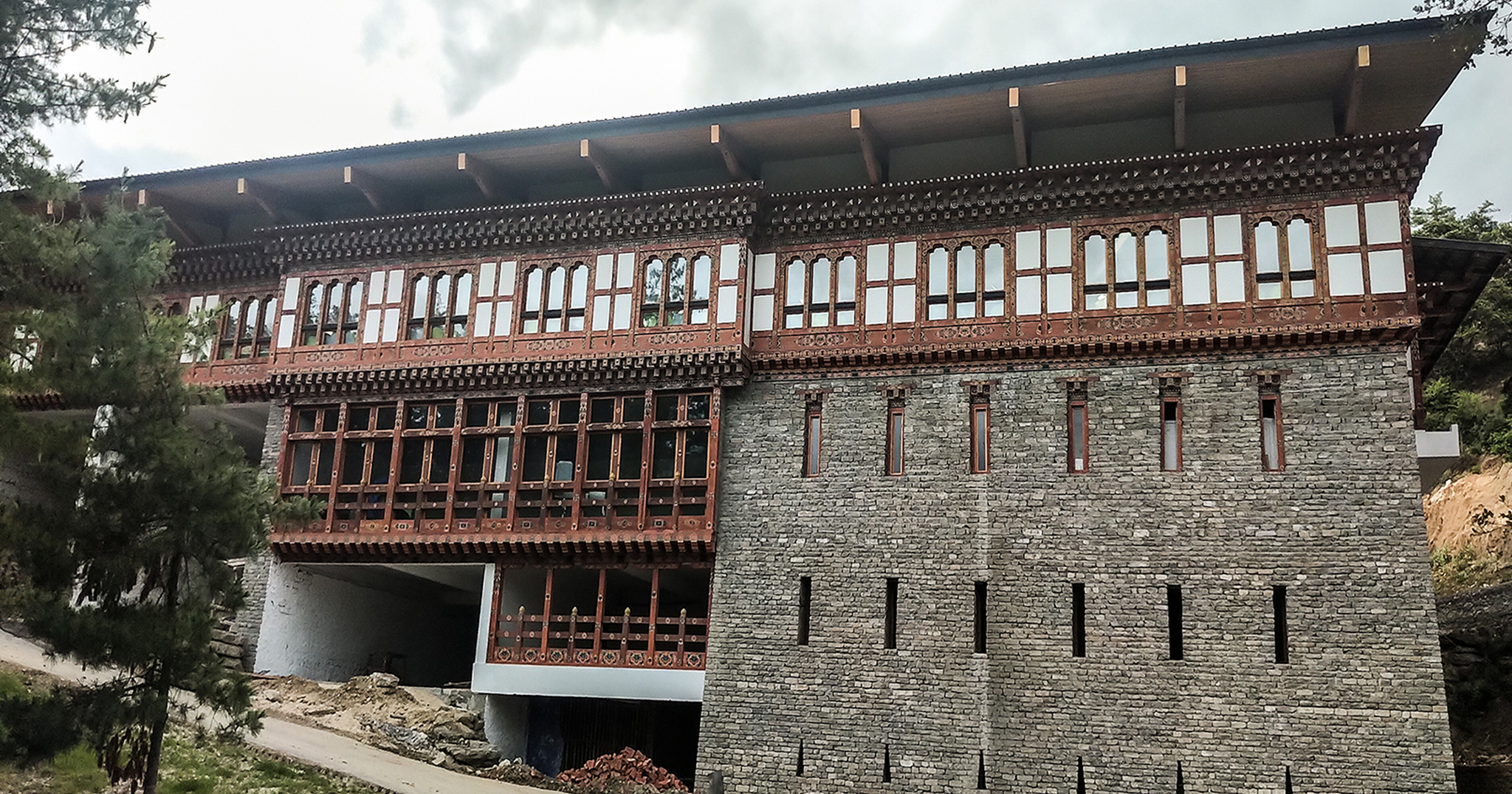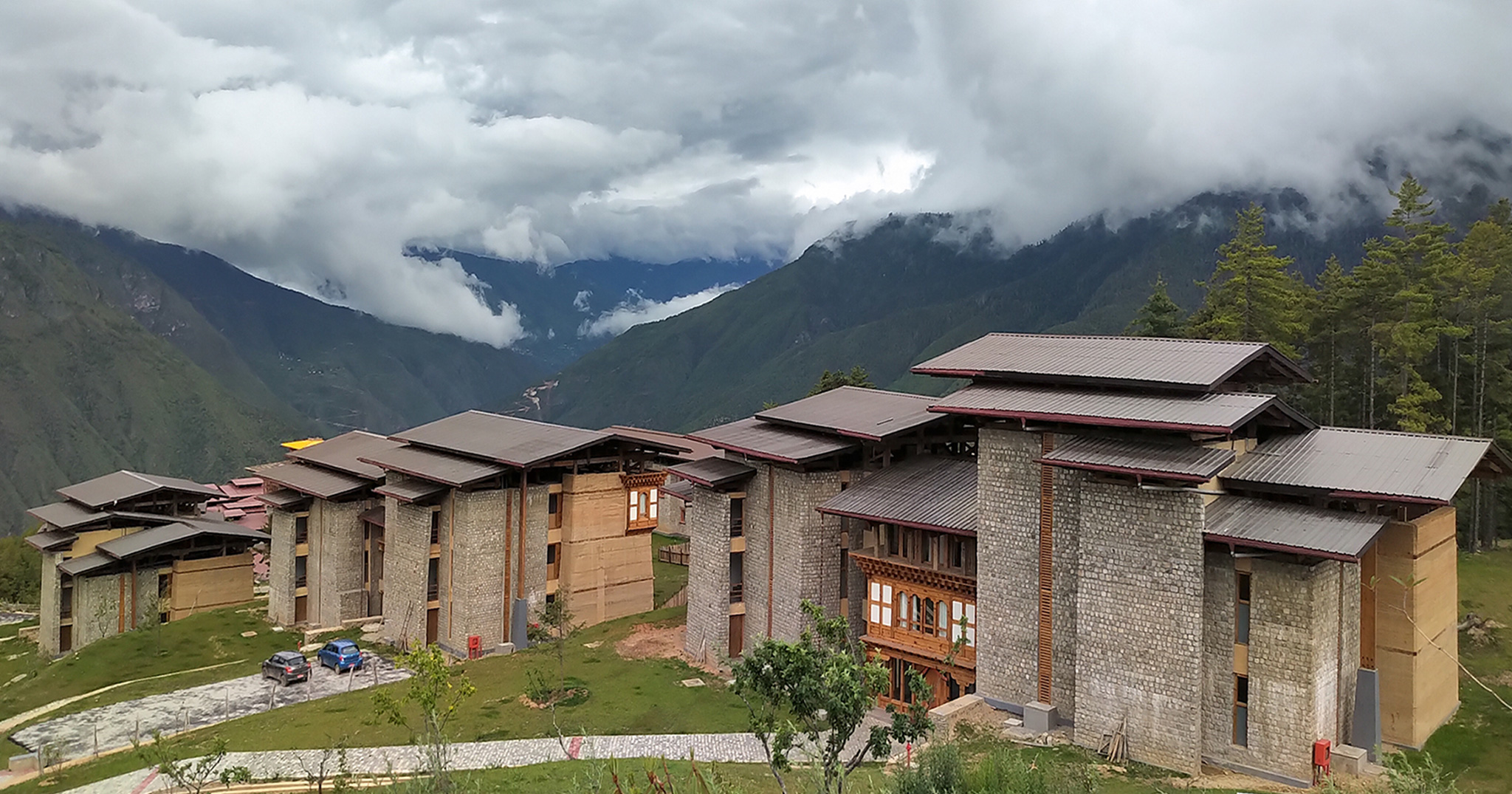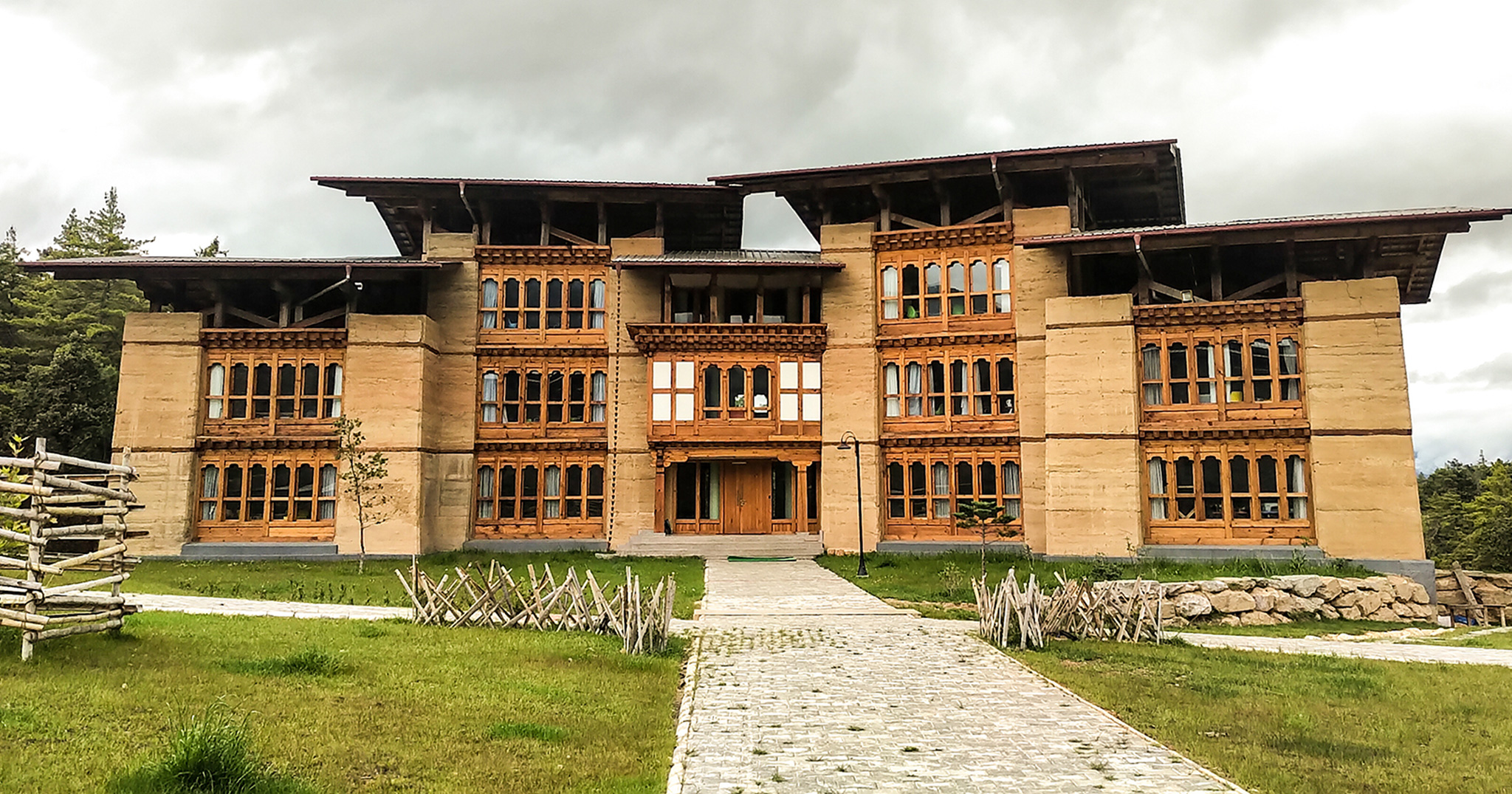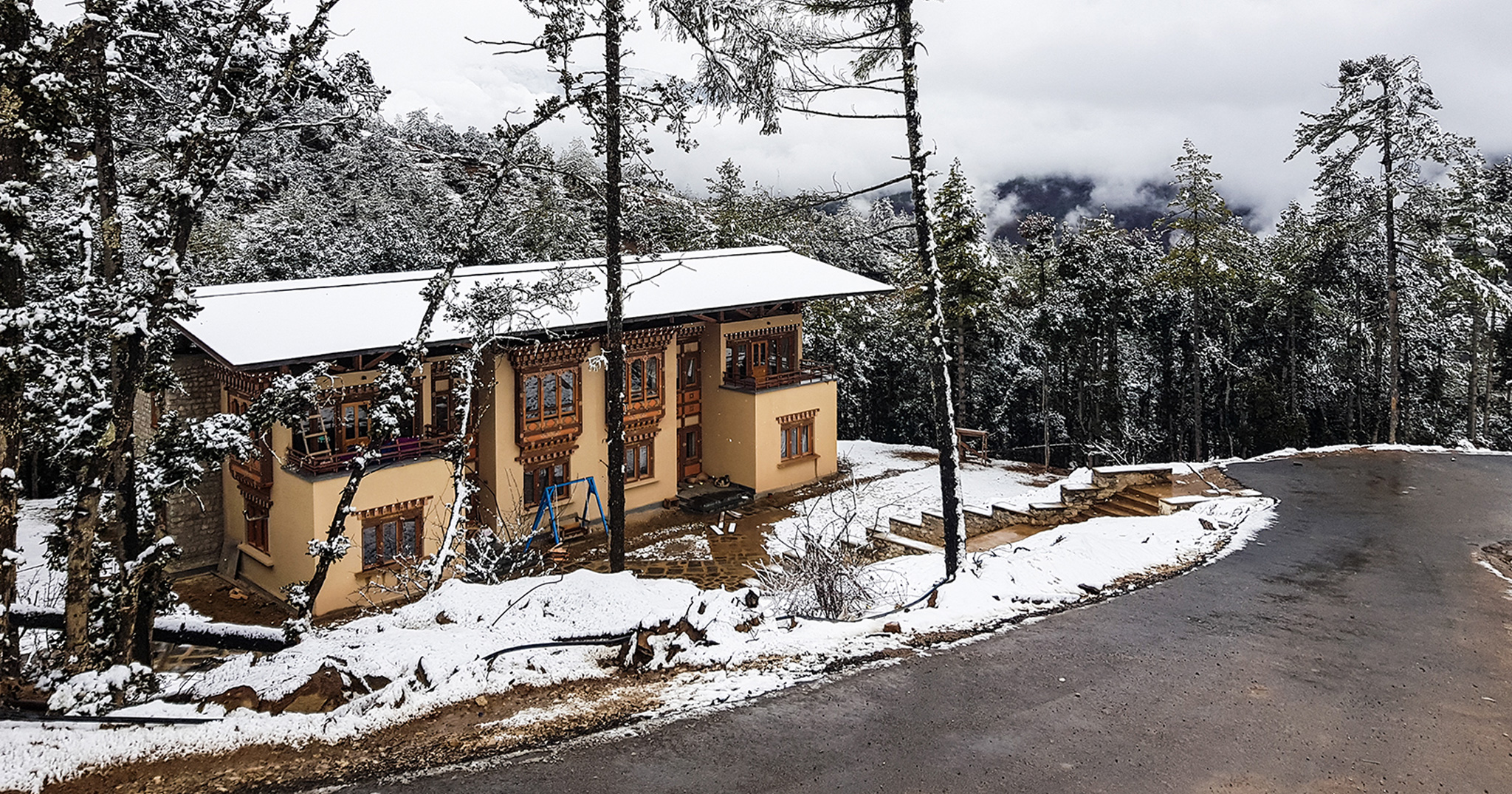“I am a firm believer that if there is one word that will stand out above all other words when we describe our country’s amazing journey of modernization over the last few decades – it is Education. Our institutions, our leaders of today – all of us, including me – are the proud products of the Bhutanese education system.”
His Majesty’s Address at the Third Convocation of the Royal University of Bhutan, Paro College of Education on, 17th Feb. 2009.
This Project was awarded thru an Invited Design Competition of 3 Indian, 3 International and 3 Bhutanese Architects.
It is our understanding that projects of such significance in a Nation’s developmental history have many questions embedded in them. This project is not seen just as an academic institution of excellence butas a ‘trigger’ that would open up several avenues for new development paradigms.
Bhutan as a Nation has brought to the forefront traditional wisdom through its measurable means of GNH Indicators. This ideology depends significantly on evolving a system that promotes these values.
Three of the four criteria used in the Gross National Happiness Index are directly connected with nature. It is fairly evident that the design should respond to this need.
A campus that creates opportunity to engage with all attributes of nature. The Master Plan thus has to create an opportunity for holistic education of campus design.
We see this project as an opportunity to engage with new technologies. The technologies that could be adopted will have to focus on the Nation’s resource base and work towards making efficient use of its resources. This would therefore engage enhancing current skill base that will carry a people gifted with crafts and skills to new heights.
Having identified environment and its understanding as central to the evolving education system, the experience and engagement with the eco-system is critical.
On analyzing the available information of terrain, vegetation, hydrology, solar studies and visual significance for the entire six hundred acre site, we could conclude that the most logical division of the site would be on the basis of watersheds, using a minimum footprint of buildable area. This would ensure equity and sustainable environment, both being central to the value system of Bhutan.
This conceptual organization of activities and movements is directed towards creating opportunities for the academic institution to base its education and practices that would constantly engage with the value and vision of the Bhutanese people.
A water shed is the unit.
Master Plan & Sustainability
MACRO LEVEL
Selection of land which gets Sun for longer hours in winter.
Orientation of major building in support of the selection of land. Terracing the building towards south to get maximum Winter Sun.
Dividing land according to hydrology lines, gives an opportunity to hold water for irrigation purpose.
Selecting land for a building where the vegetation is minimum.
MICRO LEVEL
Minimizing the use of materials without sacrificing the symbolic values.
Using innovative technology to reduce the use of natural material. Use of stone reduced to less than half but still have the similar structural strength as solid wall.
Using laminated timber construction to maximize the use of material, reduce wastage and result in stronger timber members.
A Quantum leap over the traditional method of construction, despite using the same language.
Total Built Up Area: 90,000 sqmts.
Landscape Architect – Design Cell
His Majesty’s Address at the Third Convocation of the Royal University of Bhutan, Paro College of Education on, 17th Feb. 2009.
This Project was awarded thru an Invited Design Competition of 3 Indian, 3 International and 3 Bhutanese Architects.
It is our understanding that projects of such significance in a Nation’s developmental history have many questions embedded in them. This project is not seen just as an academic institution of excellence butas a ‘trigger’ that would open up several avenues for new development paradigms.
Bhutan as a Nation has brought to the forefront traditional wisdom through its measurable means of GNH Indicators. This ideology depends significantly on evolving a system that promotes these values.
Three of the four criteria used in the Gross National Happiness Index are directly connected with nature. It is fairly evident that the design should respond to this need.
A campus that creates opportunity to engage with all attributes of nature. The Master Plan thus has to create an opportunity for holistic education of campus design.
We see this project as an opportunity to engage with new technologies. The technologies that could be adopted will have to focus on the Nation’s resource base and work towards making efficient use of its resources. This would therefore engage enhancing current skill base that will carry a people gifted with crafts and skills to new heights.
Having identified environment and its understanding as central to the evolving education system, the experience and engagement with the eco-system is critical.
On analyzing the available information of terrain, vegetation, hydrology, solar studies and visual significance for the entire six hundred acre site, we could conclude that the most logical division of the site would be on the basis of watersheds, using a minimum footprint of buildable area. This would ensure equity and sustainable environment, both being central to the value system of Bhutan.
This conceptual organization of activities and movements is directed towards creating opportunities for the academic institution to base its education and practices that would constantly engage with the value and vision of the Bhutanese people.
A water shed is the unit.
Master Plan & Sustainability
MACRO LEVEL
Selection of land which gets Sun for longer hours in winter.
Orientation of major building in support of the selection of land. Terracing the building towards south to get maximum Winter Sun.
Dividing land according to hydrology lines, gives an opportunity to hold water for irrigation purpose.
Selecting land for a building where the vegetation is minimum.
MICRO LEVEL
Minimizing the use of materials without sacrificing the symbolic values.
Using innovative technology to reduce the use of natural material. Use of stone reduced to less than half but still have the similar structural strength as solid wall.
Using laminated timber construction to maximize the use of material, reduce wastage and result in stronger timber members.
A Quantum leap over the traditional method of construction, despite using the same language.
- Site area: 260 Acres. Year 2013.
- The Dzong :
- School Building & infrastructure – class 6 – 12.
- Teacher Training Centre.
- Curriculum Development Centre: including Seminar rooms, Labs, Auditorium in the form of a Kuenray – 600 seats.
- Student Housing :
- 8 blocks for Boys and Girls.
- Dormitory Parents.
- House Masters residence.
- Dining Hall :
- 1200 capacity.
- Kitchen, Cold Rooms, Stores, Bakery.
- Laundry.
- Faculty Residences:
- Spread over three faculty villages
- 120 units -2 – 3 bedrooms.
- School Directors, Bursar.
- Faculty Club.
- Guest House.
- Sports Infrastructure:
- Multiple sports field with spectator seating.
- 400 meters, Track & Field Events.
- Indoor Multipurpose Hall – 600 Seats.
- Indoor swimming pool.
Total Built Up Area: 90,000 sqmts.
Landscape Architect – Design Cell


